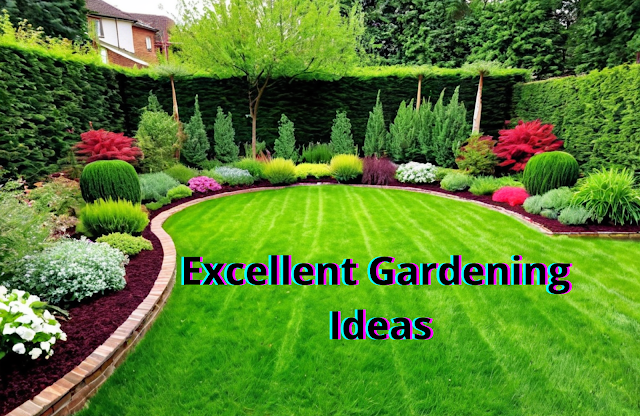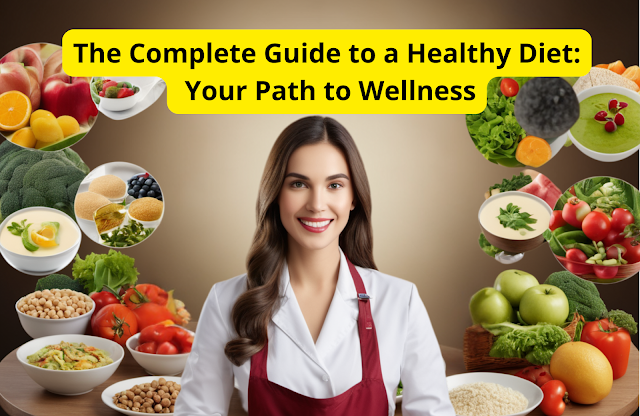Excellent Gardening Ideas
Excellent Gardening Ideas: Transform Your Garden into a Beautiful and Productive Space
Gardening is a wonderful hobby that offers numerous benefits. It not only provides you with a beautiful and tranquil outdoor space but also serves as a source of fresh fruits, vegetables, herbs, and flowers. Whether you have a small backyard or a sprawling garden, there are countless gardening ideas that can elevate your outdoor area, making it more vibrant, efficient, and eco-friendly. In this guide, we’ll explore excellent gardening ideas, from growing your own food to creating a peaceful garden retreat.
1. The Importance of Gardening
Before diving into creative gardening ideas, it’s important to understand why gardening is such a rewarding activity. Gardening offers numerous benefits that go beyond aesthetics. Some of these include:
- Physical Health: Gardening is a great form of exercise that promotes physical health. Digging, planting, and weeding help burn calories and improve muscle tone.
- Mental Health: Spending time in nature is a proven stress reliever. Gardening offers relaxation and helps reduce anxiety and depression.
- Environmental Impact: Gardening contributes to a healthier planet by promoting biodiversity, improving air quality, and reducing carbon footprints.
- Self-Sufficiency: Growing your own fruits, vegetables, and herbs allows you to eat fresh, healthy, organic produce, and can save you money in the long run.
2. Choosing the Right Garden Design
The foundation of any great garden begins with a well-thought-out design. Whether you’re planning a small urban garden or a large backyard space, it’s essential to design your garden based on the space available, your preferences, and your gardening goals.
Garden Layout Ideas:
- Formal Gardens: These gardens have structured layouts, often featuring symmetrical designs, geometric shapes, and defined pathways. They are perfect for those who prefer a more polished and organized look.
- Cottage Gardens: A charming, informal garden that incorporates a mix of flowers, vegetables, and herbs in a seemingly random arrangement. It’s great for smaller spaces and offers a cozy, whimsical atmosphere.
- Vertical Gardens: Ideal for small spaces like apartments or urban areas, vertical gardening utilizes walls, trellises, and other vertical surfaces to grow plants upwards. This allows you to maximize space and create a green oasis even in limited areas.
- Raised Bed Gardens: Raised beds are an excellent option for growing vegetables and herbs, especially in areas with poor soil. They provide better drainage, reduce weeds, and make gardening more accessible.
Incorporating Paths and Walkways:
Adding paths or walkways enhances the functionality and aesthetic appeal of your garden. Choose materials such as gravel, stone, or wood to create pathways that guide visitors through your garden. A well-placed path can lead to a seating area, a water feature, or a hidden corner of your garden.
3. Grow Your Own Vegetables: A Kitchen Garden
One of the most popular gardening trends is creating a kitchen garden or vegetable garden. Growing your own food is rewarding and helps you save money on groceries while ensuring you have fresh, organic produce at your fingertips.
Planning Your Vegetable Garden:
- Location: Choose a sunny spot for your vegetable garden, as most vegetables require at least 6-8 hours of sunlight per day.
- Soil Preparation: Prepare the soil by adding organic matter like compost or manure to improve fertility and drainage. Ensure that your soil is loose and well-drained.
- Raised Beds or Containers: If you have limited space, raised beds or containers are great options for growing vegetables like tomatoes, peppers, and lettuce.
Best Vegetables for Home Gardens:
- Tomatoes: Easy to grow and highly productive, tomatoes are a favorite among home gardeners. They thrive in warm climates and require plenty of sunlight.
- Lettuce and Leafy Greens: Lettuce, spinach, and kale are fast-growing crops that can be harvested multiple times throughout the growing season.
- Peppers: Whether you prefer sweet bell peppers or hot chili peppers, these plants are easy to care for and can be grown in both garden beds and containers.
- Carrots: Carrots are a root vegetable that grows well in loose, sandy soil. They are perfect for raised beds or container gardening.
Companion Planting:
Companion planting is a smart gardening technique where different plants are grown together to benefit one another. For example, planting marigolds near your vegetables can help deter pests, while beans can fix nitrogen in the soil to benefit leafy greens.
4. Creative Container Gardening Ideas
If you lack space for a traditional garden, container gardening is a fantastic alternative. Container gardening allows you to grow plants on patios, balconies, or rooftops, making it accessible for anyone, regardless of space constraints.
Choosing the Right Containers:
- Size: Make sure your containers are large enough to accommodate the root systems of the plants you’re growing. Larger containers retain moisture better and require less frequent watering.
- Material: Choose containers made of durable materials like terracotta, plastic, or ceramic. Ensure they have drainage holes to prevent waterlogging.
- Self-Watering Containers: Consider using self-watering containers, which have a built-in reservoir that provides water to the plants as needed, reducing the frequency of watering.
Best Plants for Container Gardening:
- Herbs: Basil, mint, rosemary, and parsley are excellent herbs to grow in containers. They thrive in small spaces and can be placed on windowsills, patios, or balconies.
- Strawberries: Strawberries grow well in hanging baskets or containers and produce sweet, delicious fruit throughout the growing season.
- Dwarf Fruit Trees: If you have enough space, consider growing dwarf fruit trees in large containers. Apples, lemons, and figs are popular choices.
- Succulents: Low-maintenance and drought-tolerant, succulents are ideal for container gardening. Their unique shapes and textures add visual interest to any garden.
5. Sustainable Gardening: Eco-Friendly Practices
Sustainable gardening focuses on minimizing waste, conserving water, and using eco-friendly materials. By adopting sustainable practices, you can reduce your garden’s environmental impact while creating a thriving ecosystem.
Composting:
Composting is one of the most effective ways to reduce waste and create nutrient-rich soil for your garden. You can compost kitchen scraps, grass clippings, leaves, and other organic materials to create a natural fertilizer.
- How to Start a Compost Bin:
- Choose a compost bin or build your own.
- Add green materials like fruit scraps, vegetable peels, and coffee grounds.
- Layer with brown materials such as leaves, twigs, and cardboard.
- Turn the compost regularly to aerate it and speed up decomposition.
- After a few months, the compost will break down into a dark, crumbly substance that can be added to your garden beds.
Rainwater Harvesting:
Collecting rainwater is an excellent way to conserve water in your garden. Install a rain barrel to collect water from your roof, which can then be used to water your plants during dry periods.
Mulching:
Mulching helps retain soil moisture, suppresses weeds, and improves soil fertility. Organic mulches like straw, wood chips, and leaves decompose over time, adding nutrients to the soil.
Native Plants:
Incorporating native plants into your garden is a sustainable practice that supports local wildlife and requires less maintenance. Native plants are adapted to your region’s climate and soil, making them more resilient and drought-tolerant.
6. Creating a Tranquil Garden Retreat
Gardens are not only places for growing plants but also for relaxation and reflection. A well-designed garden can serve as a peaceful retreat where you can unwind after a long day. Here are some ideas for creating a tranquil garden space.
Incorporating Water Features:
The soothing sound of running water can add a sense of calm to any garden. Consider adding a small pond, fountain, or waterfall to your garden design. Water features attract birds and other wildlife, making your garden feel more alive.
Garden Seating Areas:
Create a comfortable seating area in your garden where you can relax and enjoy the beauty of your surroundings. Choose garden benches, hammocks, or outdoor sofas, and place them in a shaded area under a tree or pergola.
Garden Lighting:
Incorporate soft lighting into your garden to create a warm and inviting atmosphere in the evenings. Solar-powered lights, string lights, and lanterns are eco-friendly options that can be used to illuminate pathways or seating areas.
Zen Gardens:
A Zen garden, also known as a Japanese rock garden, is a minimalist garden design that promotes meditation and mindfulness. It typically features raked gravel or sand, rocks, and minimal plants. Zen gardens are perfect for small spaces and require very little maintenance.
7. Growing Flowers for Color and Fragrance
Flowers bring beauty, color, and fragrance to any garden. Whether you’re looking to create a colorful flower bed or a fragrant cutting garden, here are some ideas for incorporating flowers into your outdoor space.
Perennial Flowers:
Perennials are plants that return year after year, making them a cost-effective option for adding long-lasting beauty to your garden.
- Lavender: Known for its soothing fragrance, lavender is a hardy perennial that thrives in sunny areas and attracts pollinators like bees and butterflies.
- Coneflowers: These drought-tolerant perennials come in a variety of colors and are perfect for adding height and structure to your garden beds.
- Peonies: Peonies are large, showy flowers that bloom in late spring or early summer. Their delicate petals and sweet fragrance make them a favorite among gardeners.
Annual Flowers:
Annuals are plants that complete their life cycle in one growing season. They are perfect for adding bursts of color to your garden beds or containers.
- Marigolds: These bright, cheerful flowers are easy to grow and repel garden pests like aphids and nematodes.
- Petunias: Petunias come in a wide range of colors and are perfect for hanging baskets or window boxes.
- Zinnias: Zinnias are fast-growing annuals that add vibrant color to your garden. They are also great for attracting butterflies.
Conclusion: Cultivating Your Dream Garden
Gardening is a rewarding and fulfilling activity that allows you to create a beautiful, productive, and eco-friendly outdoor space. Whether you’re growing your own vegetables, designing a peaceful retreat, or experimenting with container gardening, the possibilities are endless.
By incorporating the gardening ideas mentioned in this guide, you can transform your garden into a space that reflects your personality and meets your needs. Whether you have a small balcony or a large backyard, these ideas will help you make the most of your space, enhance its beauty, and enjoy the many benefits that gardening has to offer.



